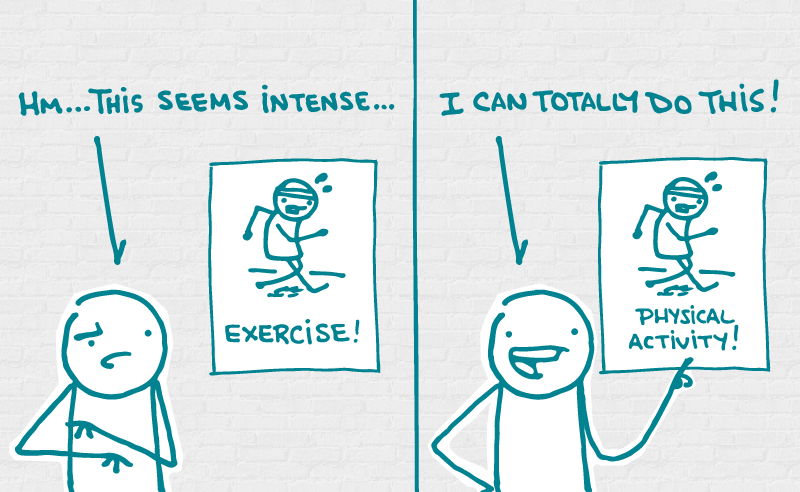
This week, we’re adding to our frequently asked question series by tackling this one: When writing health education materials, should I use “physical activity” or “exercise”? Here at We ❤️ Health Literacy Headquarters, we’re all in for “physical activity.” And we’ll tell you why in just a minute.
But first, in case anyone wants to get technical, exercise and physical activity are not exactly the same thing! Physical activity is any movement you do with your body that uses energy. It can be light, moderate, or vigorous. Some examples of physical activity are walking, dancing, and running. Exercise is a type of physical activity that’s often planned, structured, and repetitive. While it can be light, it’s often not. Some examples of exercise are taking an aerobics class, lifting weights, and playing on a sports team.
Okay, so why do we recommend “physical activity” over “exercise”? Because it’s not only a fact that exercise is generally more intense than physical activity — it’s also true that the word “exercise” generally seems more intense than the term “physical activity.” And for some people (a lot of people?), that’s not necessarily a good thing.
To someone struggling to get active, getting more “physical activity” might feel more manageable than getting more “exercise.” The examples you give your audiences matter, too. Consider:
- Getting more physical activity can help you feel better. Try taking a walk after dinner a few nights this week.
- Getting more exercise can help you feel better. Try hitting the treadmill after dinner a few nights this week.
All that’s different in these examples are the terms used and the corresponding examples — not the amount of time or effort needed. But which do you think seems more doable? Exactly.
The bottom line: Choosing between “physical activity” and “exercise” in your health comm materials? We like the more approachable, less likely to overwhelm “physical activity.”
Browse recent posts